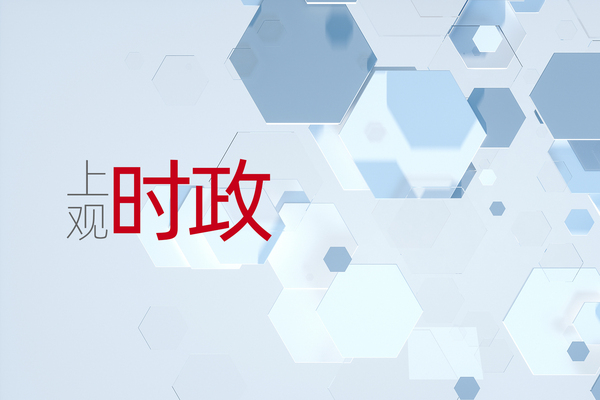Looking at China through the Flowing Rivers - Dialogue on China's Water Control Plan and World River Governance China | Country | Plan
Xinhua News Agency, Beijing, June 23 (Xinhua) - China's Water Control Plan: Dialogue on World River Governance
Xinhua News Agency reporter
Those who are good at governing a country must first manage water.
From Dayu's flood control to the Dujiangyan Irrigation Project project, from the "artificial Tianhe" Red Flag Canal to the Three Gorges Dam, the Chinese nation has accumulated rich experience and wisdom in river management since ancient times.
Only when the rivers are peaceful can the country and the people be peaceful. Numerous international figures have told Xinhua News Agency reporters that China has made remarkable achievements in water resource management, protection, and development, and is an excellent model of river governance in the international community. It not only embodies the characteristics of inheriting tradition, but also has China's institutional advantages. China's practices and concepts are worth learning from and learning from in other countries.
China's achievements in river governance are remarkable
The great river is rolling and the long river is surging.
Since the 18th National Congress of the Communist Party of China, China has continuously improved its river basin flood control engineering system. In 2022, officials from the Chinese Ministry of Water Resources announced at the "China's Ten Years" series of themed press conferences that the average annual loss caused by floods in China in the past decade has decreased from 0.57% in the previous decade to 0.31% of GDP; The number of various water monitoring stations nationwide has increased from over 70000 in 2012 to 120000 in 2021. The accuracy of flood forecasting for major rivers in the south and north has been improved to over 90% and 70% respectively; Over the past decade, China has managed a total of 580000 square kilometers of soil erosion, achieving a "double decline" in both the area and intensity of soil erosion nationwide.
General Secretary Xi Jinping has always been concerned about China's great rivers.
In November 2020, General Secretary Xi Jinping pointed out at the symposium on comprehensively promoting the development of the Yangtze River Economic Belt that it is necessary to put the restoration of the Yangtze River's ecological environment in an overwhelming position, build a new system of comprehensive management, and take into account the organic links of water environment, water ecology, water resources, water safety, water culture and shoreline, and promote the coordinated management of the upper, middle and lower reaches of the Yangtze River, rivers, lakes and reservoirs, left and right banks, improve ecosystem quality and stability.
In October 2021, when General Secretary Xi Jinping visited the mouth of the Yellow River, he urged that the Yellow River is our mother river, and protection is the prerequisite. We must have a beginning and an end, and persevere in the ecological protection of the Yellow River.
On April 1st of this year, the Yellow River Protection Law of the People's Republic of China came into effect, providing strong guarantees for promoting ecological protection and high-quality development in the Yellow River Basin on the track of the rule of law. This, together with the previously promulgated Yangtze River Protection Law, provides clear legal protection for the two mother rivers of the Chinese nation and has become a landmark measure to comprehensively promote the legalization of the national "river strategy".
Philippe de Couberville, a professor at the French Polytechnic Institute in Sofia and a distinguished professor at the China Institute of Water Resources and Hydropower, pointed out that the Yangtze River and Yellow River are important rivers in the world and two key components of China's water security.
He stated that the Chinese government's clear action goals and firm determination are excellent examples of river governance internationally. China has efficiently implemented many solutions, such as establishing a river chief system to coordinate actions and management. At the same time, China effectively manages and utilizes important water conservancy infrastructure, playing its role in agricultural irrigation and river transportation.
Dr. Abbas Sharaki, a professor of geology and water resources at Cairo University in Egypt, said that China has a long history in water conservancy engineering construction and water resource protection, and has rich experience in water resource management, protection, and development.
Burmese Ministry of Transport and Communications official Dang Lun said that the technology and experience shared by China are very practical and worthy of reference and learning from countries around the world, including Myanmar.
China and foreign countries join hands in international river management
Drinking a river together, fate is closely linked.
China has a vast territory and shares international rivers with many countries along its long border. The Chinese plan has won international acclaim for working together to govern international rivers and share sustainable water resources.
The boundary river between China and Russia, Heilongjiang, flows into the Sea of Okhotsk. The Heilongjiang River Basin has a vast area and abundant resources. In recent years, China and Russia have engaged in active and effective cooperation, maintaining close cooperation in pollution prevention and fishery conservation. Among them, the joint monitoring of boundary river water quality between China and Russia has achieved significant results.
Heixiazi Island is located at the confluence of the Heilongjiang and Ussuri rivers on the Sino Russian border.He pointed out that Heixiazi Island focuses on ecological protection, building basic infrastructure and developing tourism on the basis of protection.
Under the joint concern and promotion of the heads of state of China and Russia, in June 2022, the first cross Heilongjiang highway bridge between China and Russia, the Black River Blagoveshchensk Highway Bridge, was officially opened to traffic. In the construction of the bridge, in order to prevent pollution to the water quality of Heilongjiang, all accumulated water on the bridge is discharged to the ground's clean water tank through pipelines, purified to meet standards, and then discharged.
The Qinghai Tibet Plateau is located in southwestern China and is known as the third pole of the Earth. It is the birthplace of the Yangtze River, Yellow River, and Lancang River. After exiting the Lancang River, it is called the Mekong River and flows downstream through Myanmar, Laos, Thailand, Cambodia, and Vietnam. China and relevant countries have jointly established the Lancang Mekong Cooperation Mechanism, and water resources cooperation is the flagship area of Lancang Mekong Cooperation.
On the occasion of General Secretary Xi Jinping's state visit to Laos in 2017, a signed article published in the Lao media pointed out that the Lancang-Mekong cooperation mechanism has achieved fruitful results since its official launch in 2016, reflecting the "Lancang-Mekong speed" and "Lancang-Mekong efficiency". Cultivated a Lancang-Mekong culture of equal treatment, sincere mutual assistance, and family closeness.
In 2020, China launched the annual hydrological information sharing of the Lancang River, opened the website of the Lancang Mekong Water Resources Cooperation Information Sharing Platform, and promoted information sharing cooperation. To cope with the severe floods and droughts in the Lancang Mekong Basin, China has scientifically adjusted the cascade hydropower stations on the Lancang River, playing a disaster prevention and reduction role of "adjusting flood and supplementing drought", and jointly safeguarding this "river of life" with coastal countries.
Tong Mengdai, a researcher at the Mekong River Strategy Research Center of Cambodia's Asian Vision Research Institute, said that China is an important contributor to the development of Mekong River resources and environmental protection. China has been sharing accurate annual hydrological data with Mekong River basin countries, which helps Mekong River countries better monitor rivers and forecast floods and droughts. China has also provided emergency information on abnormal increases or decreases in water level and flow, as well as other factors that may lead to floods in the downstream of the basin.
Vice Chairman of the Lao National Assembly, Songma Benchena, said that China is a responsible partner, timely and transparently sharing water and cultural data of the Lancang River with downstream countries, and conducting emergency cooperation in response to drought and flood disasters. In recent years, when drought occurred in the Lancang Mekong Basin, China overcame difficulties and urgently increased the discharge of the Lancang River to help alleviate the drought situation in the Mekong River basin countries, despite its own severe drought and insufficient upstream precipitation. This has received high praise from the people and government of Laos as well as relevant countries.
China's water management experience benefits the world
Human beings live by water, and civilization is born by water.
Gu Bowei said that China has the Yangtze River and Yellow River, and France has the Seine River. Both countries are facing the arduous task of river governance and can fully engage in exchanges and cooperation. The management of rivers in France is facing problems such as aging facilities and insufficient funding. China's rich experience in water management can bring inspiration to France and Europe.
Sharaki pointed out that Egypt and China have carried out good cooperation in the field of water resources in multiple directions and levels. Egypt can draw on China's long-term rich experience in water resource protection, protect rivers, develop clean energy, and promote the economic and social development of Egypt and the African continent.
Water is not only the source of life, but also the foundation of production and ecology. China, with 6% of the world's freshwater resources, ensures nearly 20% of the world's population's water use and creates over 18% of the world's economic output. At the same time, it accelerates the recovery of the ecological environment of rivers and lakes, with more and more rivers restoring vitality and more watersheds regaining vitality.
Assistant Professor Beatty from Chulalongkorn University in Thailand told Xinhua News Agency that China has achieved water resource management, flood prevention and control, and water security through long-term planning, infrastructure investment, and other means. For countries facing long-term water scarcity difficulties, there are many experiences and practices that can be learned from.
Song Ma said that China has accumulated rich experience in flood and drought disaster prevention, water resource utilization and protection. While effectively preventing floods and ensuring water supply security, it also attaches great importance to food security and energy security. China coordinates the relationship between development and protection, uses a systematic and scientific approach to water management, and strives to achieve high-quality economic and social development. China's experience is worth learning and drawing on.
Tong Mengdai pointed out that the cooperation between China and the Mekong countries under the joint construction of the "the Belt and Road" and the Lancang Mekong cooperation mechanism has provided a huge opportunity to promote the economic and social development of the Mekong countries, which is crucial to improving people's well-being, narrowing the development gap within the region, and building a community of shared future for the Lancang Mekong countries.
The Yellow River sets in the sky and walks through the East China Sea, with thousands of miles written into my chest. In the new era, China is willing to share its water management concepts, wisdom, and experience with the world, make positive contributions to improving the water management system, and paint a new picture of human water harmony for jointly building a community of life on Earth.




